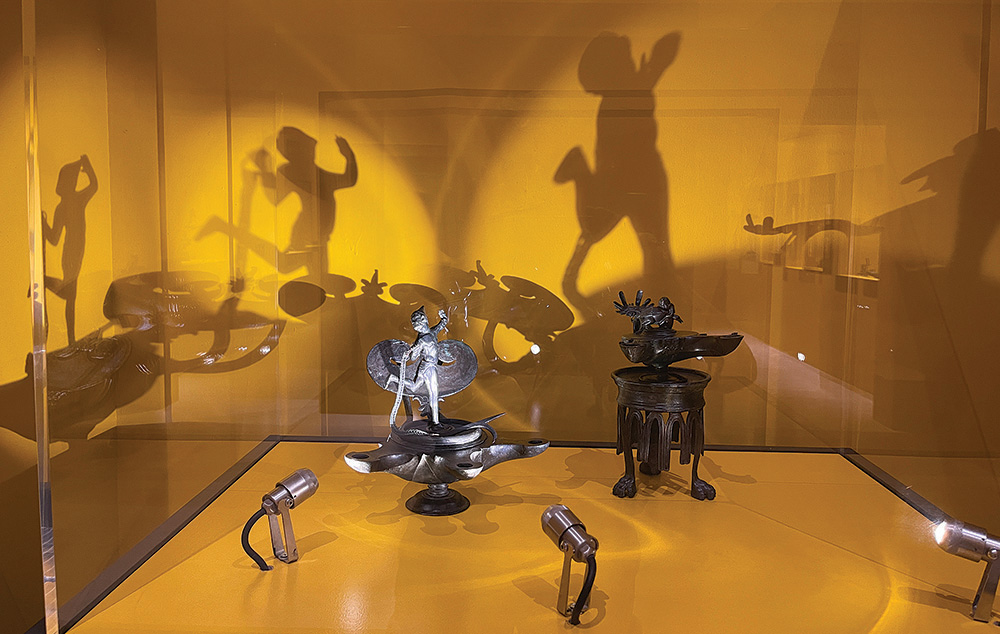AJA Open Access
July 2024 (128.3)
Museum Review
Bringing Roman Light to Life
Nuova luce da Pompei (New Light from Pompeii) explored the role of artificial light in the lives of ancient Romans. In addition to presenting 180 rarely seen bronzes from Pompeii, including lamps, candelabra, and elegant statues that held lamps, the exhibition demonstrated the effects and meanings these lighting devices generated. Clearly, Roman lamps have lost their agency, presented as objects in museums or in photographs—a problem addressed by encouraging visitors to handle replicas of lamps and to light them virtually. In a virtual reality recreation of the triclinium of the House of Polybius, visitors could use a torch to light lamps and see what they could reveal—or fail to reveal. Videos of elaborate lamps with figures standing on their oil holes were particularly noteworthy, demonstrating their potential for “shadow play.” In addition to plumbing the meanings of the astonishingly varied imagery, the show investigated bronze metallurgy and modern conservation, as well as the role lamps played in the convivium, cult, nighttime pursuits, and commerce. A section on the creation of pastiches and copies evoked the antiquarian culture sparked by the discovery of Pompeii and Herculaneum. In its Rome venue, curators added a roomful of rarely seen objects from Rome’s former Antiquarium Comunale.
